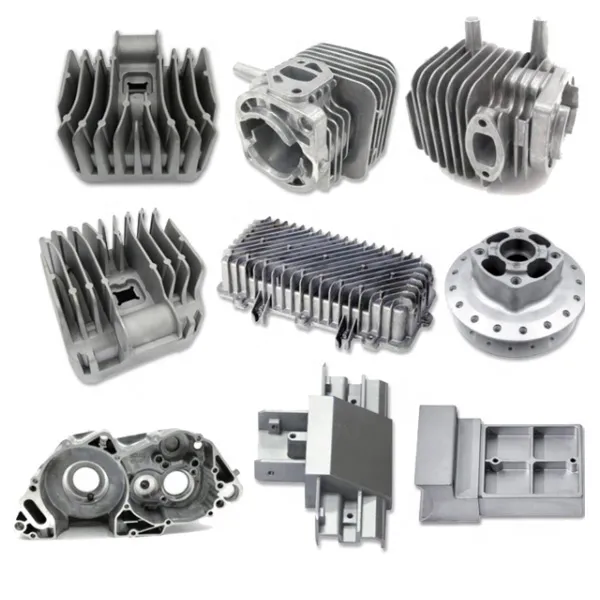CNC Milling Car Machined Parts: Precision Engineering for the Automotive Industry
2024-10-12
In the fast-paced world of automotive manufacturing, precision and quality are paramount. One of the key technologies driving innovation in this field is CNC milling, a process that allows for the production of highly detailed and accurate car machined parts. In this blog, we’ll explore what CNC milling is, its advantages in the automotive sector, and the various applications of CNC-milled parts in car manufacturing.
What is CNC Milling?
CNC (Computer Numerical Control) milling is a machining process that uses computer-controlled machines to remove material from a workpiece to create a desired shape or part. The process involves the use of rotating cutting tools that precisely carve away material based on pre-programmed specifications. This automation allows for high accuracy and repeatability, making CNC milling ideal for producing complex parts required in the automotive industry.
Advantages of CNC Milling in Car Manufacturing
1. Precision and Accuracy: CNC milling machines can achieve tolerances as tight as 0.001 inches (0.025 mm), ensuring that every part meets the strict specifications required in automotive applications. This level of precision is critical for components that must fit together seamlessly.
2. Complex Geometries: CNC milling can produce intricate designs that would be difficult or impossible to achieve with traditional machining methods. This capability is particularly valuable in the automotive industry, where parts often feature complex shapes and designs.
3. Material Versatility: CNC milling can be used on a wide range of materials, including aluminum, steel, titanium, and plastics. This versatility allows manufacturers to choose the best material for each specific application, balancing weight, strength, and cost.
4. Efficiency and Speed: Once programmed, CNC milling machines can operate continuously, producing parts quickly and efficiently. This efficiency is crucial in a competitive market where time-to-market can significantly impact success.
5. Reduced Waste: CNC milling optimizes material usage by removing only the necessary amount of material, resulting in less waste compared to traditional machining methods. This reduction in waste not only saves costs but also supports sustainability initiatives in manufacturing.
Applications of CNC-Milled Parts in the Automotive Industry
CNC milling plays a vital role in producing a wide array of components used in vehicles. Here are some of the key applications:
1. Engine Components: CNC-milled parts are commonly used in engine components such as cylinder heads, intake manifolds, and camshafts. The precision required for these parts is critical to ensure optimal engine performance and efficiency.
2. Chassis and Suspension Parts: Components like control arms, brackets, and suspension links often undergo CNC milling to achieve the necessary strength and accuracy. These parts are crucial for vehicle stability and handling.
3. Transmission Components: CNC milling is used to create various transmission parts, including housings, gears, and shafts. Precision in these components ensures smooth shifting and overall transmission efficiency.
4. Interior Components: CNC milling is also used to produce high-quality interior components such as dashboard panels, trims, and control knobs. The aesthetic quality of these parts is essential for creating a pleasing user experience.
5. Custom and Prototype Parts: CNC milling is ideal for creating custom or prototype parts, allowing manufacturers to test new designs and concepts quickly. This capability accelerates the development process and fosters innovation in automotive design.
The Future of CNC Milling in the Automotive Industry
As the automotive industry continues to evolve, so does the role of CNC milling. The advent of electric vehicles (EVs), autonomous driving technologies, and advanced materials is driving demand for more complex and lightweight components. CNC milling is well-positioned to meet these challenges, offering the flexibility and precision needed for next-generation automotive designs.
Additionally, advancements in CNC technology, such as improved software for better programming and integration with additive manufacturing (3D printing), will further enhance the capabilities of CNC milling. This integration could lead to even more efficient production processes, allowing for greater customization and reduced lead times.
Conclusion
CNC milling car machined parts represent a cornerstone of modern automotive manufacturing. With its unparalleled precision, versatility, and efficiency, CNC milling enables the production of complex components essential for vehicle performance and safety. As the automotive industry continues to innovate, CNC milling will play a vital role in shaping the future of vehicle design and production.
Investing in CNC milling technology not only enhances manufacturing capabilities but also positions companies to thrive in a competitive landscape where quality and efficiency are crucial for success.



